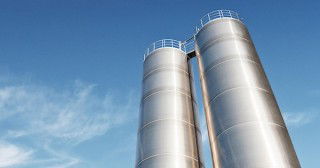A new wave of artificial intelligence (AI) systems are quickly replacing legacy cement process controls with self-learning optimisation and sophisticated AI models. They improve quality while allowing mills and kilns to achieve unprecedented throughput and energy savings. The closed-loop optimisation of the Roanoke plant in Virginia, USA, demonstrates how swiftly these improvements can be made. By Othon Manis, TITAN Cement, Greece, and Javier A García and Iñigo Llopis, OPTIMITIVE, Spain.
The digital transformation is revolutionising cement production. Many cement producers are already implementing digitalisation initiatives or are planning them. Artificial intelligence (AI) adoption in processes involving complex decision making is one of the most successful initiatives, with clear returns on investment. This is the case of AI-powered advanced control and real-time optimisation, where assets like the raw mill, kiln and finishing mills are equipped with AI software, which is connected to their control system, to apply optimal setpoints in closed loop, fully operated by AI. Such examples, which sounded almost impossible only a few years ago, are becoming a reality in a growing number of cement plants across the world and are yielding spectacular returns of investment in less than a year in most cases.
These highly efficient and flexible smart systems are replacing legacy advanced controls, based on decades-old technologies like fuzzy control or linear MPC. AI outperforms fuzzy control easily because the setpoints that the latter provides respond to condition-action rules that do not rely on an optimisation algorithm.
